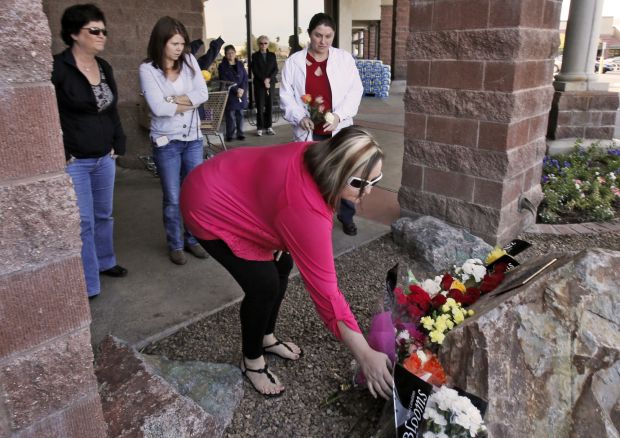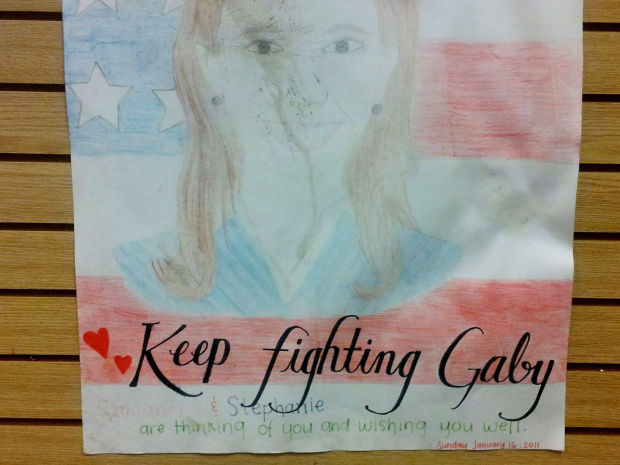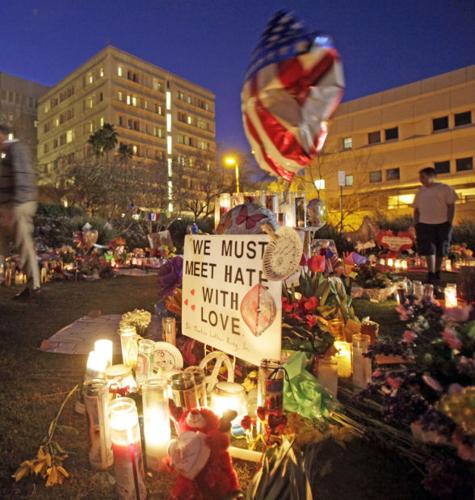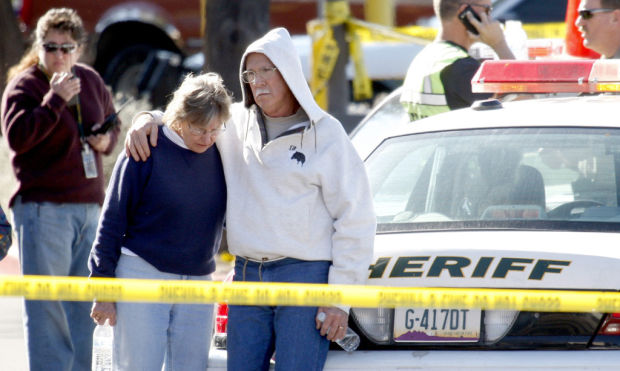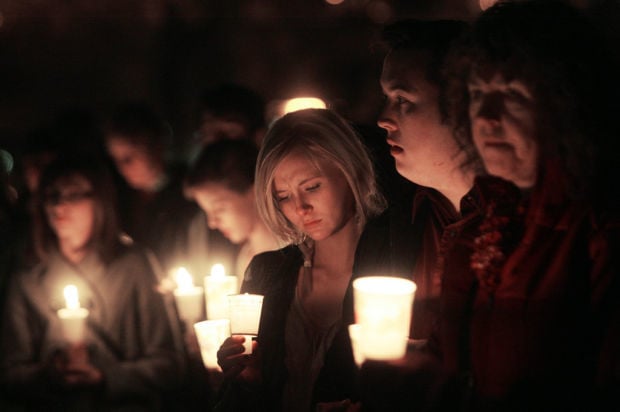Up until about 11 a.m. on Jan. 8, 2011, that date had always meant one thing to me: My brother’s birthday.
Then the attack on U.S. Rep. Gabrielle Giffords and her Congress on Your Corner event changed the meaning for me and us, turning the phrase “January 8th” into a local shorthand for tragedy, like “9/11” in the national lexicon.
Today is the third anniversary of the mass shooting, in which six people died and 13 were wounded, including Giffords and her eventual replacement in Congress, Rep. Ron Barber. For the third time, we are holding events to remember those lost and wounded that day, and the remarkable community response.
We are also, I hope, pivoting from annual commemorations toward a permanent memorial. The work of raising money and creating a memorial of an appropriate scale, design and spirit will be tough — but meaningful.
The Pima County Board of Supervisors voted in favor Tuesday of establishing a memorial at the west entrance to the historic, domed courthouse downtown. The Tucson City Council is expected to pass a similar resolution today.
What that means is that we have a location and a concept: an outdoor memorial with an indoor interpretive site, using some of the materials left outside by a grieving Tucson in those emotional weeks after the shootings.
“Everybody asks how much is it going to cost, what will it look like, and when will it be done,” said Stephen Brigham, a University of Arizona Health Network administrator and architect who is president of the January 8th Memorial Foundation.
The answer: Nobody knows yet, and it will be some time before we do. What we do know is these will be sensitive decisions involving public space and taxpayer money, which should not be handed over without deep analysis.
For this year, what we have are annual events, such as the moment of silence and ringing of bells at the UA Medical Center this morning, and a church service this evening at St. Philip’s in the Hills Episcopal Church. Strangely, such commemorations seem to serve those who were indirectly affected by the mass shooting more than those who survived or lost loved ones that day.
“The anniversary is the publicly acknowledged day when we express grief,” Elana Newman, a University of Tulsa psychologist and trauma expert, told me Tuesday. “But to those who are affected, it’s an everyday experience.”
That’s certainly been true for Ross Zimmerman. His son, Gabriel, an aide to Giffords, was shot and killed on Jan. 8, and grappling with the loss is part of his daily existence. Zimmerman has been working to establish a permanent memorial, in part because he thinks that’s what his son would do if he were alive.
Michelle Crow, who has been organizing annual community events called “Beyond,” had expected that annual events would slow down as the years passed. Instead, the outdoor-oriented activities she’s organized have only grown, she said.
“I felt like we wouldn’t have annual memorials, but every year people want to do it,” she said. “The Tucson community really enjoys coming together.”
You can see why: Crow has organized events such as hikes and runs that are more physically engaging than a solemn memorial, but still bring back that feeling of togetherness that many of us experienced after Jan. 8, 2011.
In general, interest in annual commemorations of tragedies slackens as the years go by, punctuated by press coverage on the 10th, 20th, 25th anniversaries and so on, Newman said. Anniversary commemorations and news coverage have become a part of the routine reaction to traumatic events in America, each causing the other to occur.
Yet it would be wise, Newman noted, to recognize that traumatic events leave different circles of impact within the community. For those closest to the mass shooting, the event is life-altering. I know this in part because my family is friends with Barber’s daughters’ families, and we’ve seen the impact. But many Tucsonans more remote from the shooting don’t dwell on it anymore.
A memorial should accommodate both those groups.
Earlier this year, the foundation notified the Pima County Bond Advisory Committee of its interest in $10 million in bond funding for the memorial project. Brigham said this was not a formal proposal but a back-of-the-envelope estimate put together to look into bond funding. A separate process of raising funds from private sources will begin this year.
But suffice it to say that such large-scale public spending should not fly. Local politicians may find it hard to turn down lavish public spending on the memorial, but such expenditures are not necessary.
In Colorado, the memorial commemorating the 1999 Columbine High School attack cost $2.2 million. The large federal memorial in Oklahoma City, commemorating the 1995 bombing there, cost about $27 million.
Tucson’s memorial promises to be engaging. The idea of using the materials left at the hospital, at the site of the shooting and at Giffords’ office, is a way to reconnect people to those bewildering days.
I found myself reaching back for that feeling as I toured the display of some of the material at the main library downtown Monday. One poster, a color drawing of Giffords’ face on the backdrop of an American flag, finally brought tears of remembrance. It said, “Keep Fighting Gaby / Samanatha & Stephanie are thinking of you and wishing you well.”
“The thing I hope is that future generations of young people will understand that for Tucson this was dramatic,” Barber told me Monday. “Tucson stood still, if you will.”
Said Zimmerman, “I want it to be something that, when somebody looks at it in 100 years, it makes them stop and think.”
Those are admirable hopes, and it should be possible to achieve them. With a strong fundraising effort and a design that recognizes how we will view the shooting in 20 or 50 years, we will have a permanent place to go, feel the emotions, and remember.
Because as time passes, the day will mean different things. Some years, it may be a day to get choked up over a child’s drawing. And some years, for me, it will be mainly what it used to be: my brother’s birthday.


